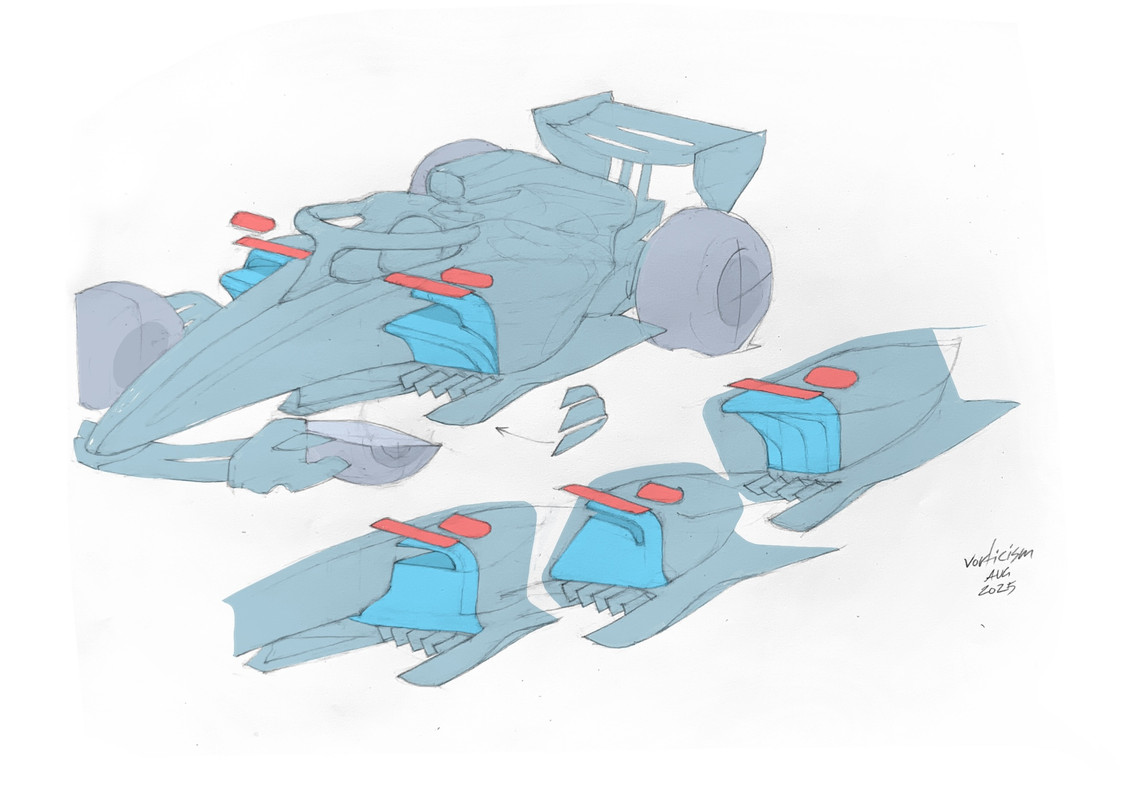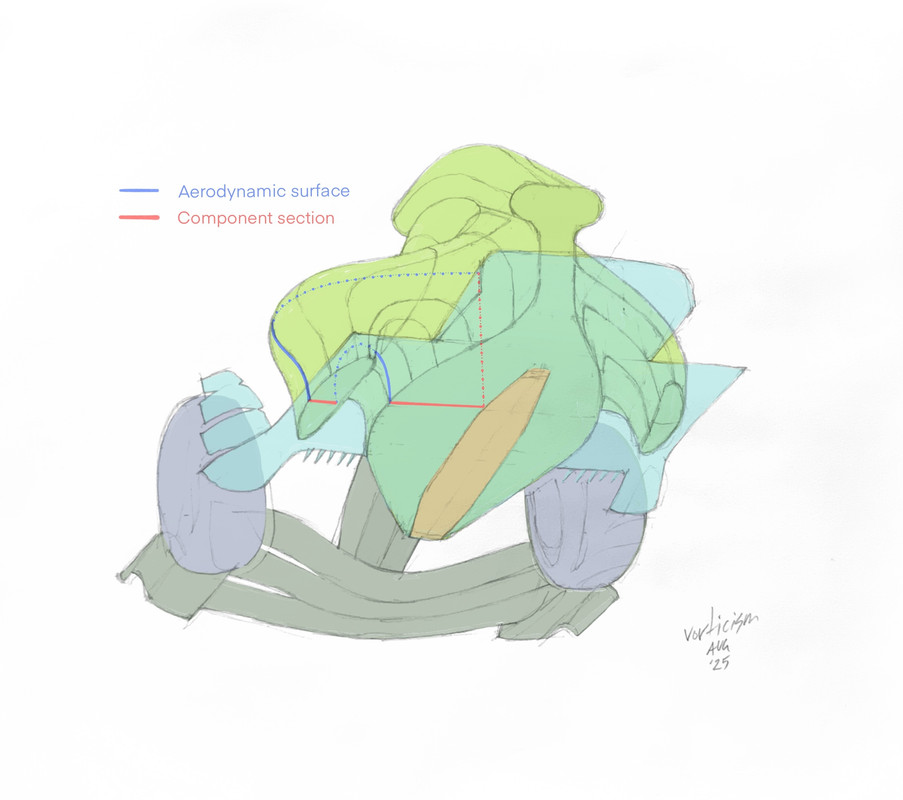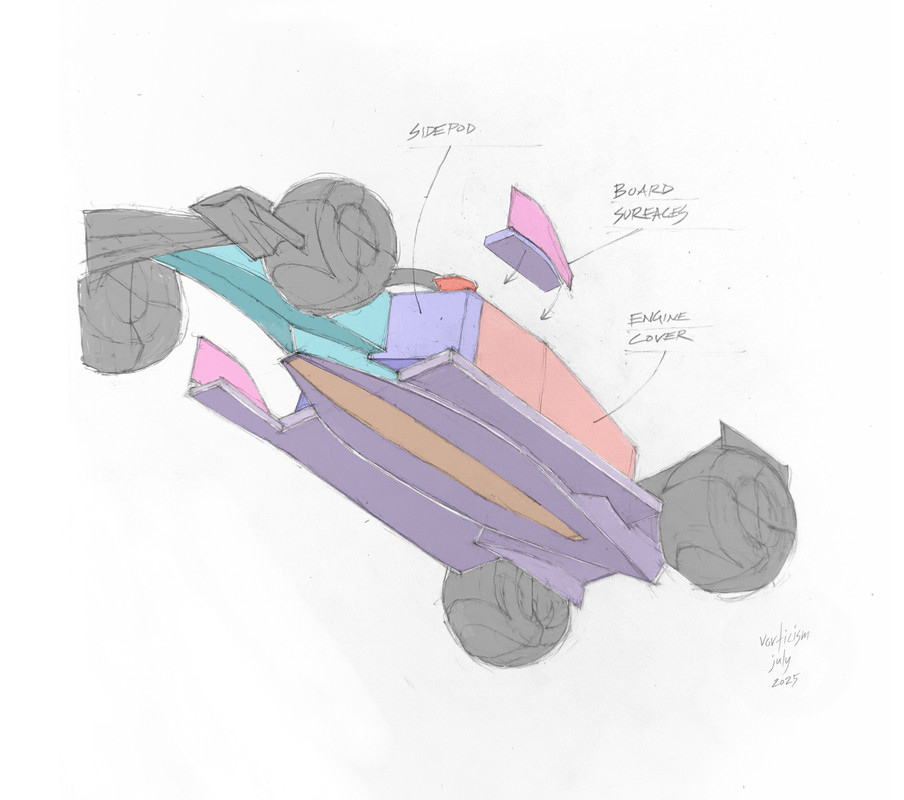A few more areas of interest:
--Sidepods: The sidepod volume overlaps the leading edge of the floor volume. It might be tempting to use the sidepod component body as an extension of the floor, although with concessions to the shaping limits of the sidepod (section & radius limits). It would be unorthodox to locate the lower edge of the sidepod so close to the leading edge of the floor, a treatment not seen since before 2009, so it may be a bad idea. The main advantage I see here would be in powering the FLEDs with a vertically oriented airstream.

--Cooling ducts & legality box boundaries: there may be scope for using the legality box boundaries and the wording of the cooling duct rules to supply clever inlets that do not rely upon the sanctioned sidepod apertures. For example, the cooling ducts are largely unregulated; their main limitation seems to be that they must not be visible "from outside the car" from any view perpendicular to the longitudinal axis, so a duct which faces inward between a gap in the engine cover and the "mid chassis" (safety cell/monocoque) could be hidden by the floor and the engine cover.

--Tunnels: there seems to be scope to create a tunnel through the outboard extremities of the engine cover, between the floor and the engine cover, with concessions to the engine cover shaping rules which demand soft surfaces everywhere (min and max radii), meaning the inlets and outlets of such a tunnel would be somewhat compromised. The engine cover component bodywork* can have up to two sections in a z plane and only one section in x planes, but crucially there’s no limit to the number of aerodynamic surface sections it can have upon that initial component bodywork x plane section. Thus the single x section rule for this component bodywork could be satisfied while having two aero surface sections upon that same single section.

--Sidepods: they might be totally omittable. The side impact structures can fit entirely within the engine cover volume. One of the two mirror stays can only attach to a sidepod surface, the other must attach to the safety cell/cockpit body. So if you can get away with one mirror mount and boundary interface cooling inlets, you should be able to omit the sidepod surfaces entirely. Worth noting, the sidepod volume is relatively small.
You could say all of these are legal, but not necessarily advantageous.
*The various areas of the car are now dealt with as “components” which are evaluated individually with cross-section limits, and the surfaces of these components which do not join to other components are called “aerodynamic surfaces” because they would be the only part of that component exposed to the airstream.
Approximation of the relevant reference volumes:
 High res: https://x.com/athalkunni/status/1949527890510659684
High res: https://x.com/athalkunni/status/1949527890510659684




